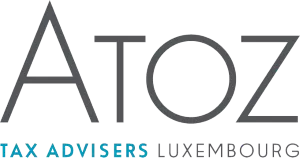- within Corporate/Commercial Law topic(s)
- within Technology and Finance and Banking topic(s)
- with readers working within the Aerospace & Defence and Pharmaceuticals & BioTech industries
At a glance
- The transposition of the Mobility Directive into Luxembourg law has been adopted.
- The Mobility Directive introduces a comprehensive legal framework to facilitate cross-border transactions. It also provides with restrictive measures, creating a more complex and time-consuming process for cross-border transactions of companies within the European Union ("EU").
- Luxembourg has adopted a dual approach to ensure legal certainty while reinforcing the attractiveness of Luxembourg as a cross-border mobility friendly country.
- The more restrictive and complex cross-border mobility rules of the Mobility Directive are introduced under a separate section of the law in order to ensure a limited and strict interpretation.
- For transactions involving a company located in a third country which do not fall under the scope of the Mobility Directive, the traditional legal framework currently applicable remains in place with certain amendments allowing to further simplify it.
- Cross border operations falling within the scope of the Mobility Directive shall be anticipated to take into account the increasing administrative burden and process.
Article
Yesterday, the law of 17 February 2025 (the "New Law") transposing the Directive (EU) 2019/2121 of the European Parliament and of the Council of 27 November 2019 (the "Mobility Directive") amending Directive (EU) 2017/1132 as regards cross-border conversions, mergers and divisions into Luxembourg national law was published.
The Mobility Directive introduces measures to harmonize the EU Member States' laws to ensure and strengthen the freedom of establishment for companies within the EU market, and to protect stakeholders in cross-border operations.
Luxembourg has long been a hub for companies whishing to enter or leave the EU and Luxembourg has a wellestablished legal and notarial practice. The challenge for a cross-border mobility friendly country such as Luxembourg lies in finding the balance between maintaining the flexibility of the existing regime and a transposition of EU restrictive measures creating a more complex and time-consuming process.
The New Law adopts a dual approach to enhance legal certainty, while opting to apply the Mobility Directive not more than strictly required in order to reinforce the attractiveness of Luxembourg as a cross-border mobility friendly country.
Common Regime
The New Law amends the current rules applicable to M&As to align them with well established corporate practices (the "Common Regime"). The Common Regime applies unless the involved companies are subject to a special regime.
In a nutshell, the Common Regime applies to:
- Domestic mergers, divisions and conversions;
- Mergers, divisions and conversions involving a company of a non-EU Member State; and
- Mergers, divisions and conversions involving a company existing under the form other than a public company limited by shares (S.A.), a private limited liability company (S.à r.l.), or a corporate partnership limited by shares (S.C.A.).
It is worth noting that the simplified merger regime now also applies to mergers between sister companies.
Specific Regime - EU Cross-Border Operations targeted by the New Law
The New Law introduces a specific regime applicable to EU mergers, divisions and conversions ("EU CrossBorder Operations") addressing the more restrictive and complex cross-border mobility rules of the Mobility Directive, under a separate section of the law (the "Specific Regime"), in order to ensure a limited and strict interpretation.
Scope of the Specific Regime
The New Law applies to public companies limited by shares (S.A.), private limited liability companies (S.à r.l.) and corporate partnerships limited by shares (S.C.A.). UCITS and companies in liquidation where the distribution of assets has begun are, among others, excluded from the scope of the New Law.
EU cross-border conversions (migrations)
For the purpose of the Specific Regime, the New Law introduces the concept of "EU cross-border conversion" meaning an operation whereby a company having the form of a company listed in Annex II of the Mobility Directive, without being dissolved or wound up or going into liquidation, converts the legal form under which it is registered in Luxembourg into a legal form of the destination Member State, as listed in Annex II of the Mobility Directive, and transfers at least its registered office to the destination Member State, while retaining its legal personality.
EU cross-border divisions (de-mergers)
The New Law also introduces the concept of "EU cross-border divisions" for the purpose of the Specific Regime. Under the New Law, a "EU cross-border division" means an operation whereby:
- a company being divided, on being dissolved without going into liquidation, transfers all its assets and liabilities to two or more newly formed recipient companies, in exchange for the issue to the members of the company being divided of securities or shares in the recipient companies and, if applicable, a cash payment not exceeding 10 % of the nominal value, or, in the absence of a nominal value, a cash payment not exceeding 10 % of the accounting par value of those securities or shares ("full division");
- a company being divided transfers part of its assets and liabilities to one or more newly formed recipient companies, in exchange for the issue to the members of the company being divided of securities or shares in the recipient companies, in the company being divided or in both the recipient companies and the company being divided, and, if applicable, a cash payment not exceeding 10 % of the nominal value, or, in the absence of a nominal value, a cash payment not exceeding 10 % of the accounting par value of those securities or shares ("partial division"); or
- a company being divided transfers part of its assets and liabilities to one or more recipient companies, in exchange for the issue to the company being divided of securities or shares in the recipient companies ("division by separation").
Procedures set up for EU Cross-Border Operations under the Specific Regime
According to the New Law, several procedural steps have to be complied with to proceed to EU Cross-Border Operations, such as:
- Draft terms of cross border conversion setting out the particularities of the proposed operation shall be issued.
- Report from the administrative or management body issued to the attention of the shareholders and employees, justifying the legal and economic aspects of the operation and its implications for future business shall be drafted. Under certain conditions, a waiver of such a report, or part of the report may be organised. Employee information rules may also apply.
- A report issued by an independent expert, on the draft terms of the operation shall be made available to shareholders at least one month before the date of the holding of the shareholders' meeting to approve the EU cross-border operation. A waiver of the report may be organised.
- The draft terms of the EU Cross-Border Operation and of the new articles of association shall be approved, amended, or rejected by the shareholders' meeting.
- Two legality controls of the EU Cross-Border Operation are
finally required to complete the process.
- A first control is organised in Luxembourg to
scrutinise the legality of the EU Cross-Border Operation as regards
those parts of the procedure which are governed by the Luxembourg
laws, the absence of serious doubts indicating that the EU
Cross-Border Operation is set up for abusive or fraudulent purposes
leading to or aimed at the evasion or circumvention of Union or
national law, or for criminal purposes, and, as a result, to issue
a pre-conversion certificate attesting to compliance with all
relevant conditions and to the proper completion of all procedures
and formalities in Luxembourg.
The Luxembourg notary has been designated in the New Law as the competent authority to carry out this control and to issue the relevant certificate in principle within three months of the date of receipt of the documents and information concerning the approval of the EU CrossBorder Operation by the general meeting of the company. An additional three-month period may be added if deemed necessary by the notary. This certificate will be filed with the Luxembourg Trade and Companies' Register and transmitted digitally to the competent register of the destination country. - The second control is organised in the Member State of destination to scrutinise the legality of the EU Cross-Border Operation as regards that part of the procedure which is governed by the law of the destination Member State and to approve the EU Cross-Border Operation. That authority shall in particular ensure that the converted company complies with provisions of national law on the incorporation and registration of companies. The Luxembourg notary has been designated in the New Law as the competent authority to carry out this second control when Luxembourg is the Member State of destination.
- A first control is organised in Luxembourg to
scrutinise the legality of the EU Cross-Border Operation as regards
those parts of the procedure which are governed by the Luxembourg
laws, the absence of serious doubts indicating that the EU
Cross-Border Operation is set up for abusive or fraudulent purposes
leading to or aimed at the evasion or circumvention of Union or
national law, or for criminal purposes, and, as a result, to issue
a pre-conversion certificate attesting to compliance with all
relevant conditions and to the proper completion of all procedures
and formalities in Luxembourg.
The New Law also puts in place strong safeguards to prevent the EU Cross-Border Operations from being used to set up artificial arrangements, including those aimed at obtaining undue tax advantages. New protective rules are provided to conciliate better protection of workers, creditors and minority partners, with mitigation of obstacles to the exercise of the freedom of establishment of EU companies.
It is worth noting that minority shareholders opposed to the EU Cross-Border Operations will have an exit right and a right to dispute the share exchange ratio to ensure it reflects a fair value, while creditors will be granted protection mechanism whereby, they will have a right to apply for adequate safeguards within three months from the publication of the draft terms.
Timing
The new regime shall apply to the EU Cross-Border Operations for which the relevant restructuring plan is published as from 1 April 2025, which is the first day of the month following the date on which the New Law comes into effect (i.e. 2 March 2025, the 4th days after its publication at the Mémorial). If the restructuring plan is published beforehand, the current legal regime shall apply.
Cross border operations falling within the scope of the New Law shall more than ever be anticipated to ensure that no practical issue delaying the process will arise.
The content of this article is intended to provide a general guide to the subject matter. Specialist advice should be sought about your specific circumstances.



